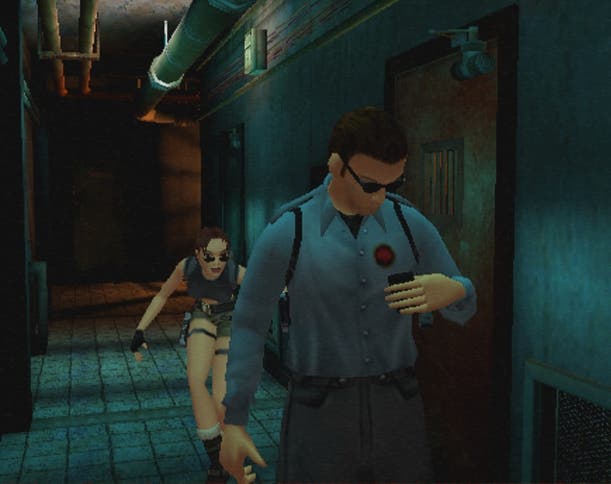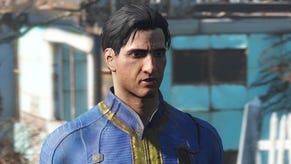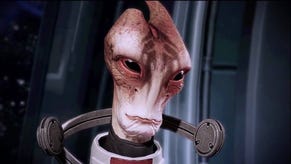Raiders of the lost Cores
Smith brothers back as Circle Studio.

The founders of the company behind the 32 million-selling Tomb Raider series have announced their return to the games industry under the guise of Circle Studio, and have hired 35 former Core Design employees to work on two prototype titles.
The two former Core front men Jeremy Heath Smith and his brother Adrian Smith have set the company up "confident that they can produce more world beating titles" and are "looking forward to creating something or someone new". They have granted themselves the same positions that they held at Core, with Heath-Smith the managing director and Smith development director.
Heath Smith said in a statement issued this morning: "'Adrian and I are still passionate about games and have the experience and skills in-house to continue producing original and successful titles".
The team has confirmed it has begun prototyping two titles for release on Xbox and PS2, and is also "preparing" for titles for eventual release on Sony and Microsoft's next consoles, but notably not Nintendo's.
Smith commented: "It's very exciting to be standing on our own two feet again and we're fortunate to be in a position that allows us to develop our prototypes fully whilst exploring the best route or partnership for publishing." This time, though, the pair might prefer to maintain independence and not sell their interests to their publisher. Ultimately, the problems surrounding last year's critically derided Tomb Raider: Angel of Darkness lead to Heath-Smith's resignation from the Eidos board, and the franchise being dramatically transferred to US developer Crystal Dynamics - no doubt a humbling and embarrassing experience.
Core Redesign

But Core's achievements during an amazing four year period between 1996 and 2000 were breathtaking, with five annual Tomb Raider incarnations all global multi-million sellers, and put the Derby-based company firmly on the map, as well as its publisher Eidos which enjoyed the fruits of the franchise's success with incredible share price performances as a result.
However, the damage was arguably done very early on, when the game's original creator Toby Gard left Core Design after the release of the first (and some would say the best) Tomb Raider to set up Confounding Factor (which incidentally is due to release its first title, Galleon, this spring on Xbox). Thereafter, the next four versions showed little creative improvement, and the law of diminishing returns kicked in as fans gradually became tired of the formula. Although the games themselves were both critically and commercially successful, it was clear that the series needed to be put out to pasture and reinvented for the next generation consoles.
Core Design knew better than anyone that it needed to build on the success, and in fact was rather resentful for having to rush out Tomb Raider Chronicles in late 2000, when it was keen to get moving with a next gen reinvention. As a result of the spectacular sales, and its role in making the PlayStation a must-have machine, Core was, according to Heath-Smith, one of Sony's preferred developers, and one of the few studios in the world to be given prototype PlayStation 2 development kits.
Work began in earnest to get to grips with the Sony's notoriously tricky to fathom technology well before most studios. But, as Heath-Smith ruefully reflected during an unpublished interview for CTW back in the summer of 2000, Sony kept revising the hardware spec to the point where everything had to be re-learned, so that any initial advantage over having the kits counted for little. The sixth in the series was cloaked in mystery, and a giant design doc revealed the title to be an ambitious epic that would show a different side to Lara. A true reinvention and a massive technological leap to sate the demands of the next gen gamer.
Late to the party

But two Christmases slipped past with no sign of a new Lara title, and the pressure from Eidos became intense to deliver what everyone hoped would be one of the lynchpin titles for the PlayStation 2. What actually happened hasn't been fully revealed as yet, but murmurs of complete redesigns, control systems being changed and a lack of focus testing suggest that the project was chaotic to say the least.
What we do know is that Angel of Darkness got to No.1, but soon slipped down the charts as word got round that the game was a bug-ridden shambles with none of the dramatic re-invention that had been promised. Ironically, the very game that inspired the series in the first place - Prince of Persia - received an unexpectedly lavish reinvention, and for many was the game of the year - and illustrated just how far Core's standards had slipped.
For all the talk of Tomb Raider, let us also not forget how Core's other titles fared during this fraught period. Project Eden emerged first to relatively positive reviews, but bombed commercially, while the promising Disney-esque Herdy Gerdy revealed that Core was years behind with its technology compared to the likes of Naughty Dog, and again, its commercial performance was exceptionally disappointing in the light of previous triumphs. Further failure from a third Thunderhawk title and the canning of an Xbox title Race Nation spoke volumes about the problems within Core.
That Heath-Smith and Smith have returned is certainly welcome, and definitely newsworthy, but the brothers will have difficulty shaking off the stigma of their Annus Horribilus as they take their first tentative steps with the new venture. All eyes will be on the most famous pair in British development history as we await to see how Circle Studios goes about wiping the slate clean and forging a reputation for itself over the coming years.








